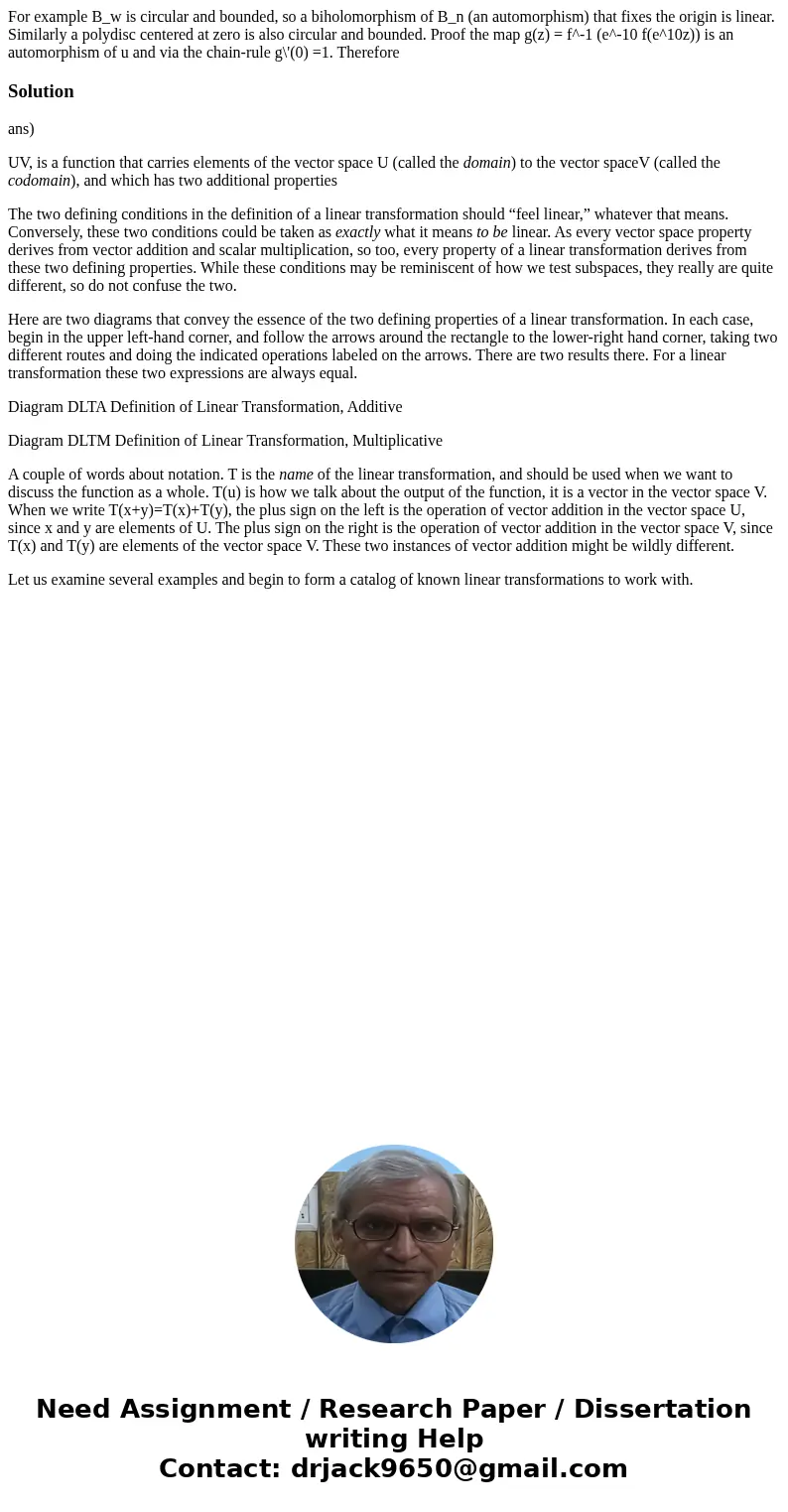For example Bw is circular and bounded so a biholomorphism o
Solution
ans)
UV, is a function that carries elements of the vector space U (called the domain) to the vector spaceV (called the codomain), and which has two additional properties
The two defining conditions in the definition of a linear transformation should “feel linear,” whatever that means. Conversely, these two conditions could be taken as exactly what it means to be linear. As every vector space property derives from vector addition and scalar multiplication, so too, every property of a linear transformation derives from these two defining properties. While these conditions may be reminiscent of how we test subspaces, they really are quite different, so do not confuse the two.
Here are two diagrams that convey the essence of the two defining properties of a linear transformation. In each case, begin in the upper left-hand corner, and follow the arrows around the rectangle to the lower-right hand corner, taking two different routes and doing the indicated operations labeled on the arrows. There are two results there. For a linear transformation these two expressions are always equal.
Diagram DLTA Definition of Linear Transformation, Additive
Diagram DLTM Definition of Linear Transformation, Multiplicative
A couple of words about notation. T is the name of the linear transformation, and should be used when we want to discuss the function as a whole. T(u) is how we talk about the output of the function, it is a vector in the vector space V. When we write T(x+y)=T(x)+T(y), the plus sign on the left is the operation of vector addition in the vector space U, since x and y are elements of U. The plus sign on the right is the operation of vector addition in the vector space V, since T(x) and T(y) are elements of the vector space V. These two instances of vector addition might be wildly different.
Let us examine several examples and begin to form a catalog of known linear transformations to work with.

 Homework Sourse
Homework Sourse